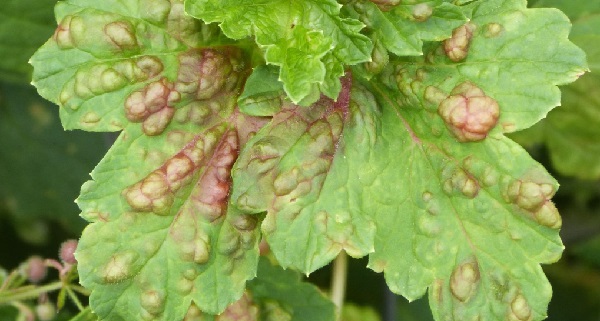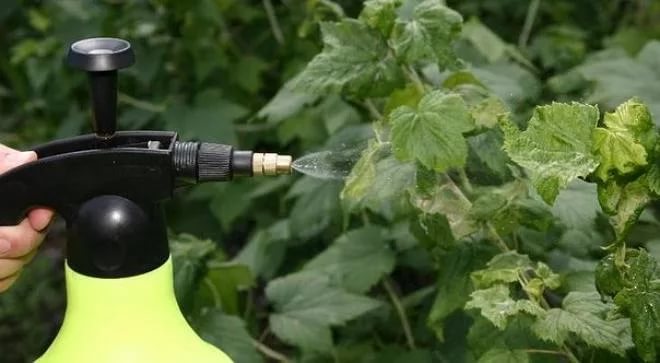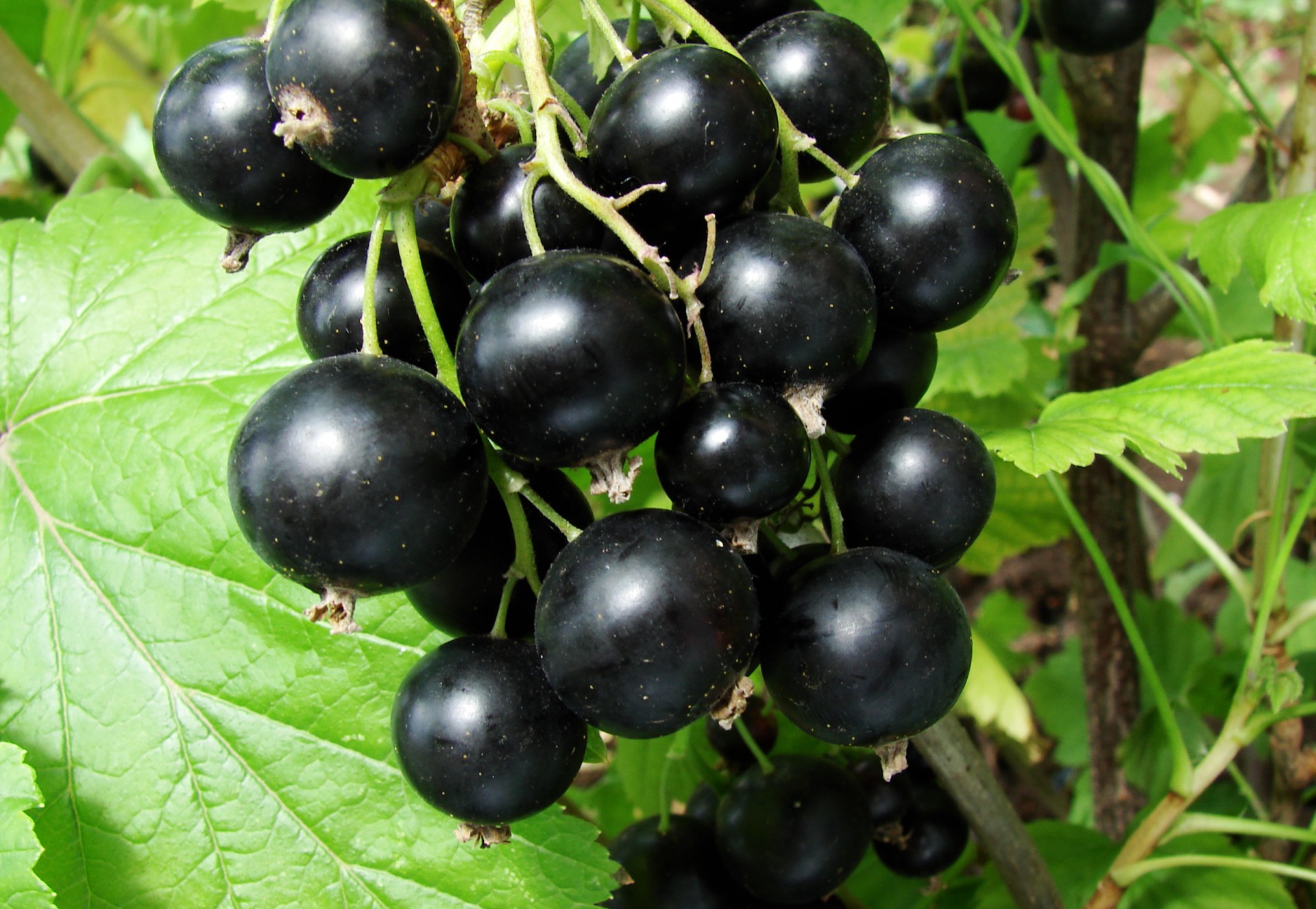Content:
The official name of this culture disease is currant reversion. It actually returns the bush to a wild state. As a result, the plant stops bearing fruit. The disease is transmitted virally and develops quickly enough, affecting branch by branch. Therefore, when the first signs of terry black currant are found, one should begin to fight its vectors, since there are currently no methods of treatment, and it is impossible to save the plant.
What is currant terry
This disease is very serious because it can cause the affected bush to stop bearing fruit. For the first time, the disease was discovered and described at the beginning of the twentieth century by scientists from Great Britain and the Netherlands. The source of the disease is mycoplasma - a substance that is a cross between a bacterium and a virus. The carriers of the disease are aphids or kidney mites, which, while consuming the juice of a diseased plant, transmit mycoplasma to a healthy plant during the feeding process. Also, the disease can be transmitted through planting material if the affected branch is used for grafting.
Signs of defeat
Terry currant can be recognized by the following symptoms:
- The leaves change their shape: they begin to bend, become asymmetrical and ugly. The number of blades on each leaf decreases (there are three of them, not five, as in a healthy plant). The veins on the leaves become coarser, while the small ones practically disappear;
- Flowers also change. At the very beginning of the disease, their endings acquire an unnatural, bright red hue. Flowers that have blossomed also turn red or purple instead of the usual white ones. Each petal can be separated from the rest, this is also a sign of an affected flower. Scales appear on them, pistils and stamens disappear (which is why the infertility of the currant bush occurs), and the flower itself begins to look terry (hence the name of the disease);
- A large number of new shoots appear, the foliage becomes thicker, but the characteristic currant aroma disappears.
Reasons for the appearance and distribution
The causative agent of the disease is mycoplasma. It is transmitted from diseased plants to healthy ones through insects that migrate in the spring. The main vector is the kidney mite. After successfully overwintering in the affected bud, it begins to move through the plant to other buds, which leads to their infection.Tick migration usually occurs in late spring or early summer. Insects are most active when the ambient temperature reaches 12 degrees Celsius.
During the migration period, which lasts from two to three weeks, ticks can move not only through one plant, but also be transferred to others (by wind, birds or small animals), which allows the disease to spread throughout the site. Also carriers are aphids, spider mites and bugs that live on plants and feed on their sap.
How to deal with the disease
Today, there is no effective way to combat terry. There are no drugs or technologies that can cure currants from the disease. Therefore, when the first signs are found, the bush should be immediately destroyed. Cutting off the affected branch will not help; the entire bush should be uprooted and burned so that the terry does not spread over the area.
At the same time, there are preventive measures that make it possible to prevent the doubleness of currants and to make the fight against it more effective:
- When transplanting and propagating crops, use only high-quality, healthy material from trusted suppliers;
- Comply with the quarantine rules. When new bushes appear on the site, they should be planted at a distance from the existing ones in order to make it difficult for the vectors of the disease to move there;
- When propagating a plant with a mother liquor, do not use all the branches. At least one is recommended to be left fertile to control the absence of disease;
- Propagating the culture by cuttings, you should cut them off only from the bushes without traces of damage and having an age of at least 3-4 years;
- Carrying out a regular inspection of the plant to detect curvature of the leaves, the presence of twisting branches, non-standard flowers (a regular flower is white, regular in shape with inseparable petals).
Removal of affected buds and branches
It is imperative to inspect currant bushes in the spring. If unnaturally enlarged buds are found on the branches, then they must be removed immediately, since this is a sign of ticks in them. If there are a significant number of such buds on one branch, it is recommended to cut it off completely.
Pouring hot water
This measure allows you to destroy almost all pests (the temperature should be 50-55 degrees Celsius - then it is safe for the plant and deadly for aphids and ticks). It is recommended to carry out the procedure in early spring, until the buds are swollen and the bush has not woken up. Later processing can harm the crop.
Chemical treatment
This method of pest control should be used before the start of their mass migration and immediately after the end of currant flowering. For processing, it is recommended to use solutions of colloidal sulfur, lepidocide or bitoxidocillin. You can also use potent substances: acarin, fufanon or fitoverm. The measure for dilution with water must be selected in accordance with the instructions.
Boost immunity
Compositions containing potassium and phosphorus should be used as fertilizer. This measure allows you to fight the cause, not the effect, moreover, there is no effective treatment method.
Tips from seasoned gardeners
The reason why currant leaves can curl up is aphids. To get rid of it, you should first cut them off. When currant leaves curl, how to process it is also an important question. Folk remedies are onion peel (infusion) and vinegar solution. These substances have a strong odor and repel insects.
It is also recommended to carry out preventive measures. In particular, burn all fallen leaves of currants, carry out regular loosening of the soil, destroy anthills near the bushes.
If scab appears on currants, it should be promptly treated with fungicides. This disease affects the leaves and reduces immunity to other diseases. The scab looks like a coating of rust on the leaves. When the first signs are found, the bush should be immediately treated with fungicides. As a preventive measure, you should constantly loosen the soil near the shrub and remove yellow fallen leaves in the fall.
If there is moss on currant bushes, the plant should be treated, otherwise it will lead to a slowdown in its growth, deterioration in the quality and quantity of fruits, the formation of a favorable environment for life and the reproduction of bacteria and pests. If moss appears on the currant, you can find out what to do on the Internet. The most common recipe is to treat the shrub with a solution of copper sulfate. You can also treat the trunks with a solution of wood ash, salt and laundry soap.
So, one of the most dangerous diseases is the terry black currant. Experienced gardeners know what to do in such a situation. However, it should be noted that it is rather difficult to diagnose the disease. Firstly, as indicated in the description, it can develop very slowly for 3-4 years. Secondly, it affects branches and foliage gradually. Third, it is difficult to understand where the disease came from. Therefore, it is much more effective to apply preventive measures. In particular:
- Regularly inspect shrubs for mold, bent branches, damaged leaves;
- Periodically loosen the ground near the bush, destroy anthills near the bush, form a crown;
- If it is found that when currant leaves curl, than spray, it is recommended to check with experienced gardeners. Typically, this is an infusion of onion peels, vinegar, or chemicals.
It should be remembered that nature cannot just twist, twist or twist a plant. It's either a disease or a lack of nutrients. Therefore, first of all, it is necessary to understand why currant branches have curves, and then eliminate the cause. Otherwise, the plant can be destroyed in vain.
















